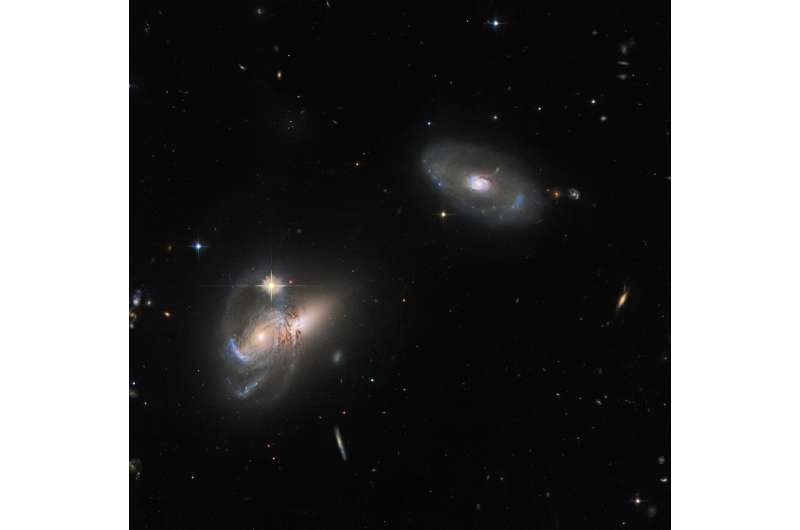Credit: ESA/Hubble & NASA, W. Keel
This luminescent image shows multiple galaxies, perhaps most prominently LEDA 58109, the only galaxy in the upper right corner. LEDA 58109 is flanked by two other galactic objects in the lower left: a galaxy with an active galactic nucleus (AGN) called SDSS J162558.14+435746.4 that partially obscures the galaxy SDSS J162557.25+435743.5, which appears to protrude into the galaxy directly behind the AGN.
Galaxy classification is sometimes presented as a kind of dichotomy: spiral and elliptical. However, the diversity of galaxies in this image alone highlights the complex web of galaxy classifications that exist, including galaxies that house extremely luminous AGNs in their cores, and galaxies whose shape defies either spiral or elliptical classification.
The example of galaxies here also illustrates the wide variety of names that galaxies have: some relatively short, such as LEDA 58109, and some very long and difficult to remember, such as the two galaxies on the left. This is due to the variety of cataloging systems that map the celestial bodies in the night sky. No catalog is exhaustive and they cover overlapping parts of the sky, so many galaxies belong to different catalogs. For example, the galaxy on the right is LEDA 58109 in the LEDA galaxy database, but is also known as MCG+07-34-030 in the MCG galaxy catalog and SDSS J162551.50+435747.5 in the SDSS galaxy catalog – the same catalog that also contains the two galaxies on the left.
Image: Hubble sees a spiral in good company
Quote: Hubble photos of a complex galactic trio (2022, July 30) retrieved July 30, 2022 from https://phys.org/news/2022-07-hubble-images-complex-galactic-trio.html
This document is copyrighted. Other than fair dealing for personal study or research, nothing may be reproduced without written permission. The content is provided for informational purposes only.

